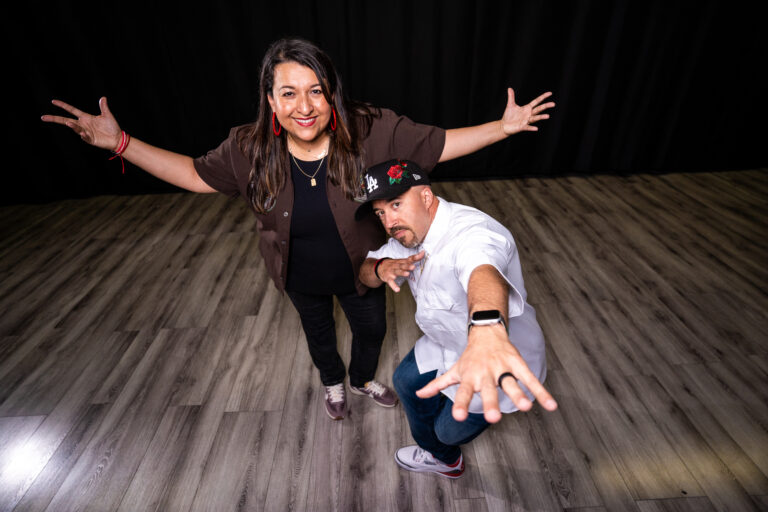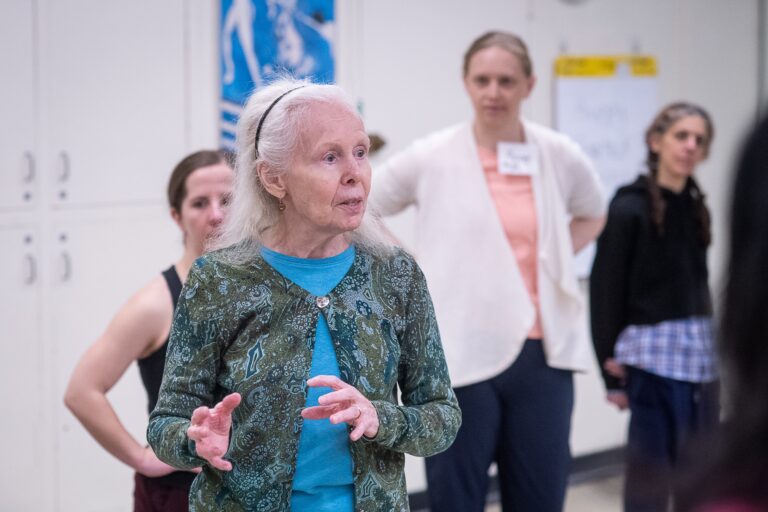Seven steps to hiring your ideal dance teacher
Hiring the right teacher can help your studio blossom.Dance teachers are the nuts and bolts of your business; one loose screw can wreak havoc on your studio morale, reputation and enrollment. So hiring a new teacher can be anxiety-inducing: There’s pressure to find the right fit the first time, because replacing any employee is time-consuming and can cost your business money. Yet time is just what you need to ensure successful hiring. Execute an organized and thorough hiring process—one that begins long before a candidate walks through your door—and you’re well on your way to building an even stronger studio.
1. Look at your business plan. Each spring Kevin Bender evaluates his current schedule and enrollment and makes note of any changes for fall. “Touch base with your current staff,” says the co-owner of Bender Performing Arts in Phoenix, Arizona. “See what their availability is, and as you’re doing yearly faculty reviews, go over what’s working or what’s not.”
Don’t forget: Hiring a teacher is not always about replacing someone. Look for gaps in your schedule and curriculum, and if you have the studio space and room in your budget, it’s a smart investment to hire a new teacher to bring new life to your business. When was the last time you expanded your client base with a new adult fitness class or a mommy and me program, for example?
2. Define your ideal hire. Look at one of your most successful teachers, advises Amy Schwenck of The Adler Group, a consulting firm that helps corporate managers finesse their hiring. “You won’t find the same person, but think about what that person does differently and create a performance profile,” she says. Bender and Schwenck agree that years of experience aren’t enough to make a great teacher. Instead, a performance profile might include a track record of successful students, a willingness to work with other faculty or the ability to manage a group of unruly teens.
Remember: Be specific. It’s easy to dream of a new hire who can instruct everything from ballet to hip hop, but know which classes you need and stick to looking for those teachers. Write a job description so expectations are clear on both sides. “Maybe you’ll get lucky and find someone to cross disciplines—but I wouldn’t go out looking for that in the beginning,” says Bender.
3. Network to find candidates. “Online postings might reach someone who has had a bad day at the studio and goes online to look for another job,” says Schwenck. Instead, ask your staff for recommendations, or put word out through local university programs or dance retailers—anyone who can network with teachers out of your reach.
Bender, who, with his wife Meri, employs roughly 30 teachers and 5 office staff members, often networks with fellow studio owners (who aren’t direct competitors) to find instructors who might want to teach in both locations. Alumni also make up more than half of Bender’s staff, including his most recent hire, who relocated to Arizona after receiving a dance degree and pursuing a professional career. “Alumni know your culture and how you run things,” he says. “They’ve been through it and need a shorter adjustment time.”
Keep in mind: Recent alumni may not be quite ready. Tiffany Carpenter, artistic director of The Pointe Performing Arts Academy in Utah, says that while she’s not against hiring alumni, it’s not always best to hire someone right out of high school. She’s created an assistant teacher program to develop budding teachers’ classroom management and pedagogy skills. “Allow them to work into the job gradually,” she says.
4. Always conduct a phone interview to make eliminations (or early selections) without bias. “It really helps put the focus on performance, not presentation,” says Schwenck. Think of NBC’s singing competition, “The Voice.” Find out about the candidate’s accomplishments and go through their background step-by-step. Ask about instances when they worked with other faculty at performances, for example, or discuss any teacher-training programs they’ve attended. What motivates them most during a challenging situation? How do they coach a range of students, from the recreational to the pre-professional?
Remember: Over the phone it’s easier to home in on a person’s resumé and previous achievements without being distracted by any physical traits. “Once you say, ‘Yes, this person is a solid fit,’ you can bring them in,” Schwenck says.
5. Spend at least 45 minutes face-to-face, regardless of your first gut feeling. “Take time to either validate your gut feelings or prove yourself wrong,” says Schwenck. Take special note if you immediately like someone. “Typically, you start to relax and ask softball questions. Stick to your guns. You may prove yourself right, or you may find the person rings shallow in the end.”
Don’t forget: Stick to probing questions about the candidate’s resumé, and never ask questions that could be deemed as discriminatory, based on marital status, pregnancy, age, religion or even ancestry, for example. Check with your legal adviser if you’re unsure of legal guidelines for interviews. “If it’s not job-related, don’t ask it,” says Schwenck.
6. Check references and ask to contact past employers. “People tend to list references that guarantee a glowing report,” says Bender. “But, if in your interview, you learn that the candidate once worked at Starbucks, say, ask if you can call HR there.”
Bender plans to implement background checks with his next hire. You’ll need to get a candidate’s written permission to conduct a background check, but keep in mind that your studio can be sued for negligence if an employee’s actions hurt someone. (To find a reputable company to handle background checks: www.napbs.com.)
Don’t forget: Look at candidates’ social media presence on Facebook and LinkedIn. Does the resumé they gave you match their profile? “I appreciate when someone adds a demo reel,” says Carpenter. “If they show themselves dancing, I can see their training. It’s not a requirement, but it helps a lot. Especially if you need a choreographer, you can see their work.” You can also check YouTube or Dancemedia.com for examples of their previous work.
7. Observe them in action. Bender and Carpenter arrange a trial class for a potential hire to lead. “I watch her confidence in the classroom, and if she’s walking around, giving corrections physically as well as verbally,” says Carpenter.
Bender also values feedback from students. “I audition the teacher in a class with longtime clients,” he says. “After that, I often put them on the studio’s sub list and I can get more feedback. That usually leads to a teaching position.”
Carpenter takes a more direct approach. If she feels good about a teacher after one or two trial classes, she puts them on her payroll right away. As Schwenck points out, “An extended trial could cause you to lose out on people.”
Keep in mind: If you choose not to hire someone, stay in touch, especially if he or she was a close runner-up to your pick. “Keep those relationships strong,” says Schwenck. “It’s about building your bench for when you’re hiring again.” DT
Photo ©iStockphoto.com




